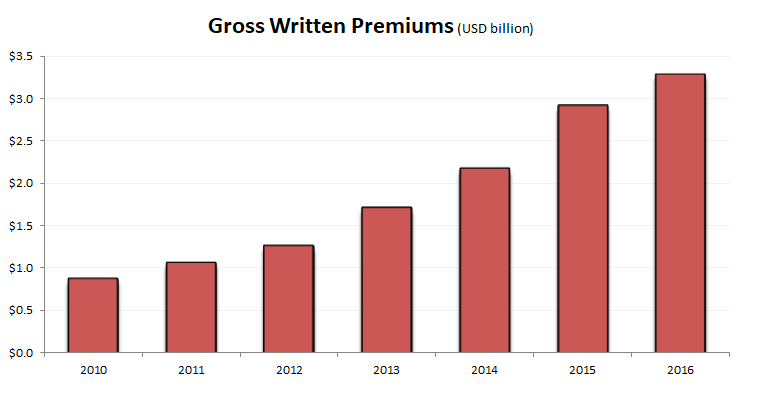Insurers are set to profit from the recent Saudi Arabia announcement to end a longstanding royal policy that prohibited women from obtaining licenses, and hence driving. The change will take effect in June 2018.
The lifting of the driving ban for women is likely to improve a number of sectors within the country’s economy, from car sales to insurance, besides giving a huge boost to its reputation.
Indeed, the decree is to impact the lives of more than 8 million women over the legal age to drive, including foreign women living in Saudi Arabia. This will also encourage more women to join the workforce resulting in productivity gains for the economy.
The decision is part of the country’s new political direction towards an economy less reliant on oil. The goal is to transform the kingdom into a global investment powerhouse with an ambitious project branded as Vision 2030
Insurers, retailers and car companies are the major winners from this lifting of the ban. It will also comfort investors, especially foreign investors, that Saudi Arabia has the political will to become the growth engine of the Middle East.
Saudi Arabia insurance market
The insurance market in Saudi Arabia is still considered as an emerging market. In 2016, the total revenue or gross written premiums (GWP) reached USD $9.9 billion, which represents less than 1 percent share of the total world premiums. However, the country has recorded high growth rates during the last five years thanks to enforcements of compulsory insurance, population growth, the increasing number of workers and vehicles and an improved insurance awareness among other things.
According to latest reports from the Saudi Arabian Monetary Authority (SAMA), over 7.3 million insurance policies were sold in 2016, compared to more than 8 million in 2015. The small drop reflects turbulences the kingdom is going through as a result of an unpredictable power-play between the new and old generation’s vision for the kingdom.
Nonetheless, Saudi Arabia’s insurance sector is a stable and regulated market. SAMA introduced a number of regulations covering areas such as risk and compliance management, fraud and anti-money laundering and solvency requirements. These regulations have helped shape the domestic insurance sector.
The majority of the direct insurance business is in health and motor insurance. This was served by the top three companies in the country namely Tawuniya, followed by Bupa Arabia and MedGulf. In total, there are 35 licensed insurance and reinsurance companies listed in the Saudi Stock Exchange, aka Tadawul.
Motor insurance market
Motor Insurance is the second largest segment in the Saudi insurance market and represents 33% of the overall gross premiums written in 2016.
The sector totalled USD $3.3 billion and recorded an average annual growth rate of 20 percent since 2010.

The kingdom exceptional growth appears as a tantalising prospect of increased opportunities for insurers. However, some of the growth is due to regulations introduced by kingdom’s financial authority.
Saudi roads are among the most dangerous in the world. Over 9,000 people were killed in car accidents in 2016, making it the highest in the region. The government has been working hard using technology along with the insurance industry to reverse the trend. This had few successes when the General Department of Traffic (GDT) introduced Saher, an automated traffic control and management system that monitors traffic in real time and tracks violations and accidents throughout the kingdom.
But one of the insurance industry’s most important contributions to road safety has been the establishment of Najm Insurance Services. The company assists drivers in the immediate aftermath of an accident by evaluating damages, helping to file accident reports and serving as a liaison between policyholders, the authorities and insurance companies.
In recent years, the Saudi motor insurance sector has seen an increase in market concentration and is currently dominated by three companies namely Malath insurance, Al Rajhi Takaful and Tawuniya having market share of more than 40% collectively.
Lifting of the ban impacts
Many studies have been conducted over the years to determine whether women are safer drivers or not. And most of these studies have confirmed that women take less risk while behind the wheels.
This is probably what the Saudi Interior Minister, Prince Abdulaziz bin Saud bin Naif, was thinking when he twitted that “Women driving cars will transform traffic safety to educational practice which will reduce human and economic losses caused by accidents,”.
By allowing women to drive, the kingdom could potentially increase its very low female labour force participation rate and therefore boosting the country’s economic growth. More women participation produces more cars on the roads and therefore more insurance policies written.
“The number of cars in Saudi Arabia is likely to increase at least 20 percent in the next ten years as a result of the decision,” said Jaap Meijer, the head of research at Dubai-based investment bank Arqaam Capital, Bloomberg reported.
In any case, the Saudi Arabia insurance industry welcomed the move and looks forward to working with all parties in growing and improving the market.






